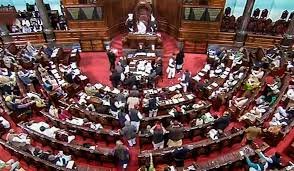NEW DELHI (India CSR)— India’s ambitious human spaceflight programme, Gaganyaan, is moving steadily toward its key milestones with significant technological and infrastructural progress, as informed by Union Minister Dr. Jitendra Singh in a written reply to the Rajya Sabha.
The update details India’s growing capabilities in indigenous space technology and its readiness to execute complex human missions to space.
Key Technological Milestones Achieved
- Human-Rated Launch Vehicle (HLVM3):
All development and ground testing have been successfully completed, ensuring the rocket is fit for carrying humans. - Orbital Module:
- Crew and Service Module propulsion systems developed and tested.
- Environmental Control and Life Support System (ECLSS) engineering model realized.
- Crew Escape System (CES):
- Five different motors developed and successfully static tested for astronaut safety.
- Infrastructure Readiness:
- Major facilities such as the Gaganyaan Control Centre, Crew Training Facility, and launch pad modifications are complete.
- Test Missions:
- Test Vehicle-D1 (TV-D1) launched to validate the Crew Escape System.
- Preparations are on track for upcoming TV-D2 and IADT-01 missions.
- Propulsion and Communication:
- Service Module Propulsion System development and qualification testing completed.
- Ground network and communication links through IDRSS-1 and terrestrial systems are fully established.
- Crew Recovery:
- Assets and plans for recovering astronauts post-mission are finalized.
First Uncrewed Mission (G1) Status
- Critical components such as C32-G stage, CES motors, and HS200 motors are realized.
- Crew Module structure and Phase-1 checks have been completed.
- Assembly of major propulsion units and modules is in progress.
Astronaut Training Progress
- Generic training of selected Indian Air Force pilots was conducted in Russia.
- Two of the three semesters of Gaganyaan-specific training in India have been completed using custom-built training infrastructure.
Upcoming Launch Timelines
| Mission | Target Date |
|---|---|
| Test Vehicle Mission – TV-D2 | Q3 2025 |
| First Uncrewed Orbital Flight (G1) | Q4 2025 |
| Second and Third Uncrewed Flights (G2, G3) | 2026 |
Economic and Innovation Impact
The Gaganyaan mission is expected to generate long-term economic and strategic benefits for India:
- Boost to Indigenous Manufacturing
- Attraction of Investments in High-Tech Sectors
- Innovation in Space Tourism, In-Orbit Manufacturing, Biomedical, and Materials Science
- Strengthening India’s Global Position in Human Spaceflight and Advanced Research
Minister’s Statement
Dr. Jitendra Singh emphasized the broader significance of the mission, stating that “the indigenous development of technologies under Gaganyaan will not only mark India’s entry into human spaceflight but will also lead to widespread industrial, scientific, and economic benefits.”
(India CSR)




















